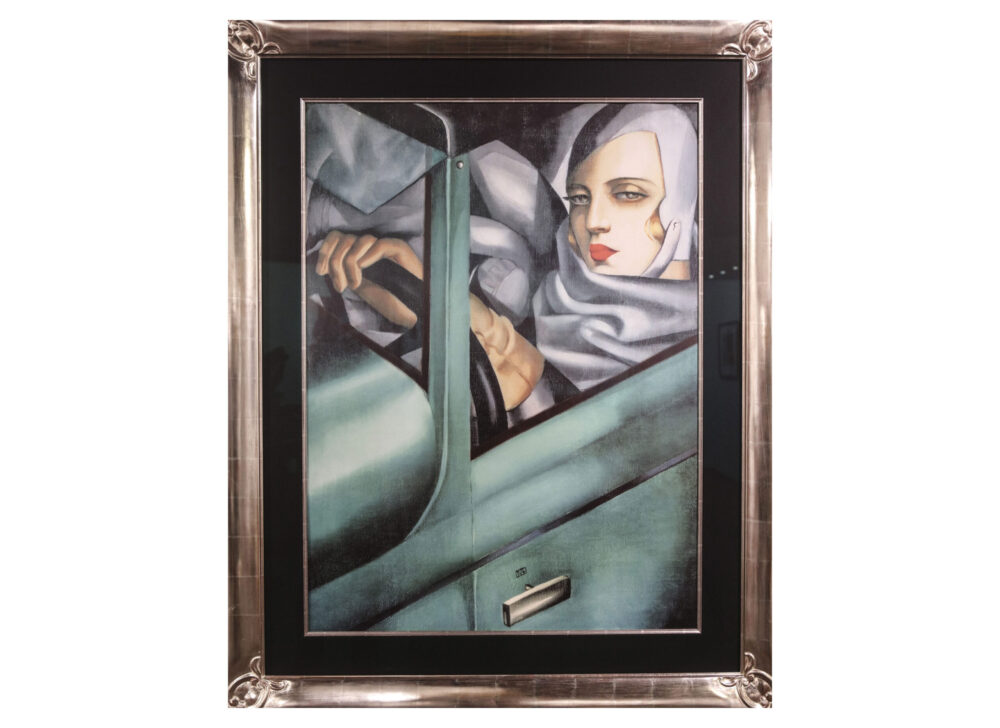Tamara Gorska-Lempitzky was born in Poland 1898. In 1911 her grandmother took her on a tour of Italy to visit museums in Florence, Rome and Venice, to study the Renaissance masters.
By age 20, she fled with her daughter and husband as the Bolsheviks invaded, and continued her artistic studies in Paris. One of her instructors was Andre Lhote at Académie de la Grande Chaumière, who was using a form of modified cubism, combined with classical style. Here she worked on fine tuning her style and her exceptional skill, and began working with models with strong, expressive features. One such model she discovered while walking in Paris, and used for a year, she called her the beautiful Rafaela. She first showed at the Paris Salon in 1922. The first official sale she had, outside of commissions, was of her daughter. By the later ‘30s her and new husband, Baron Kuffner, were spending time in Beverly Hills and New York as well as Paris, and Tamara explored the possibility of a film career. The great depression had a huge effect on the wealthy people buying art, as well as the end of the height of art deco. Her pieces from the later ‘30s were often religious figures, as the commissions of wealthy patrons had come to an end.
In 1967, some of her pieces were rediscovered and she experienced an upswing in her popularity. She died in 1980 in Mexico, with a painting in progress on the easel.
By the late 1920s, her style was defined by expressive features, with an almost cold undertone. This painting is known as ‘Self-portrait in a Bugatti.’ It could be assumed that this was her car, but her own automobile was neither green, nor a Bugatti. At the time, she was sporting a yellow Renault. This is a painting that she revisited and painted again two other times from 1974-1979. This piece was commissioned by the German magazine, Die Dame, defining her as a ‘symbol of women’s liberation.’
